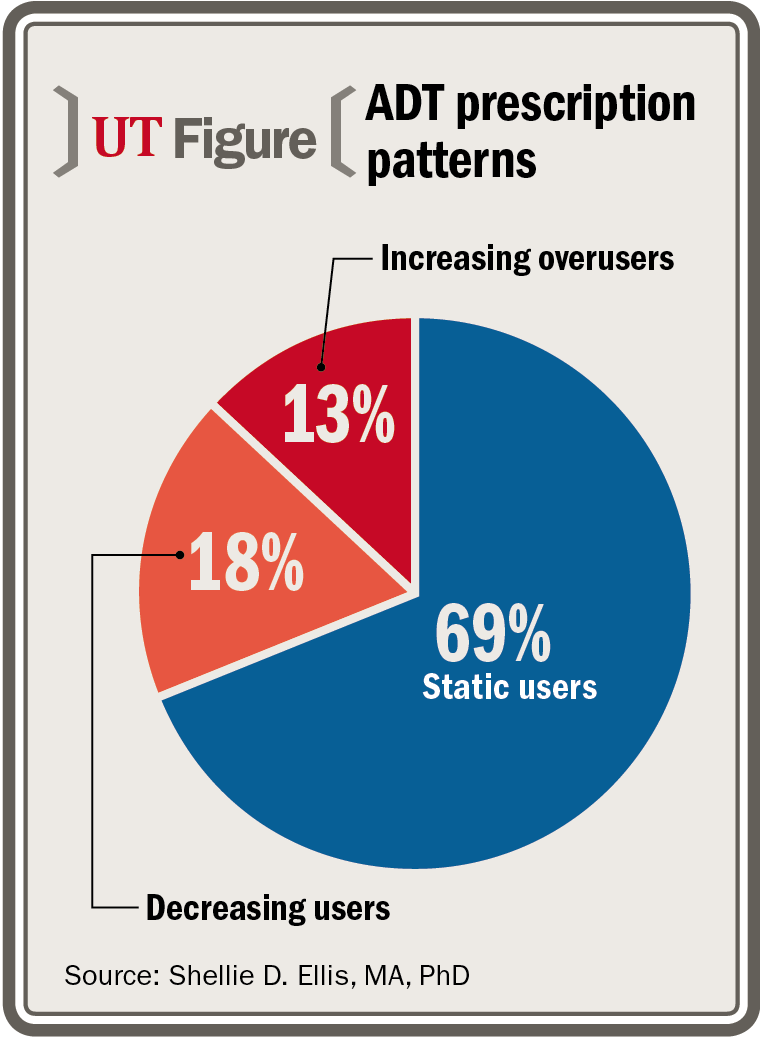Article
ADT overuse remains a problem among some urologists
Inappropriate use of a gonadotropin-releasing hormone agonist for androgen deprivation therapy of localized prostate cancer fell dramatically following implementation of reimbursement cuts mandated by the Medicare Modernization Act of 2003, but overuse remains problematic, according to research presented at the American Society of Clinical Oncology annual meeting in Chicago.
Chapel Hill, NC-Inappropriate use of a gonadotropin-releasing hormone agonist (GnRHa) for androgen deprivation therapy (ADT) of localized prostate cancer fell dramatically following implementation of reimbursement cuts mandated by the Medicare Modernization Act of 2003, but overuse remains problematic, according to research presented at the American Society of Clinical Oncology annual meeting in Chicago.
Related - Upfront chemo plus ADT dramatically improves survival
Overuse is more likely to be practiced by urologists who are in solo practice and those lacking a medical school affiliation and affecting older patients and those in ethnic minority groups, the authors found.

Next: "Limiting reimbursement did not uniformly alter practice patterns."
More on Prostate Cancer
USPSTF PSA grade has ‘minimal’ impact on screening
Medicare to cover one PCa test, PPO covers anotherApproval of enzalutamide pre-chemo a ‘game changer’
“About 25% of men with localized prostate cancer for whom ADT would not be recommended were still receiving GnRHa treatment in 2005. We were interested in trying to identify characteristics of the physicians involved as a first step towards addressing this problem,” said first author Shellie D. Ellis, MA, PhD, a postdoctoral research fellow in health policy and management at the University of North Carolina, Chapel Hill.
“Clearly, limiting reimbursement did not uniformly alter practice patterns. Now, we will be trying to determine the reasons underlying persistent ADT overuse and the best ways to reach out to this large group of solo practitioners with information on ADT effectiveness and risks in order to improve quality of care,” said Dr. Ellis, who worked on the study with Matthew E. Nielsen, MD, MS, Morris P. Weinberger, PhD, and colleagues.
The study included information for a nationwide group of 2,138 urologists treating nearly 13,000 men with early-stage and lower-grade prostate cancer diagnosed between 2000 and 2007. Characteristics of patients were extracted from Surveillance, Epidemiology, and End Results-Medicare data, and physician characteristics were identified through matching to American Medical Association physician data.
The analyses of physician overuse of ADT by study year led to the description of three groups of urologists based on patterns of prescribing before and after implementation of the Medicare Modernization Act. The majority (69%) were “static users” who had a low level of overuse in 2000 that remained relatively unchanged throughout the study period; 18% were “decreasing users” who demonstrated the highest level of overuse initially that remained steady until 2004, when it dropped precipitously and remained low; and 13% were “increasing overusers” whose overuse of ADT rose in 2004 and reached a level exceeding the highest users at the start of the study period.
Mixed effects regression modeling was performed to determine patient and provider characteristics associated with both initial overuse and increasing overuse over the study period. Provider variables analyzed included board certification, age, gender, years in practice, solo practice, medical school affiliation, percentage of minority patients, and whether the physician was U.S.-trained.
Time in practice not a factor
“We hypothesized that older physicians may have been less responsive to new evidence reporting on the harms associated with ADT and to reimbursement change, but that did not appear to be the case because time in practice was not associated with overuse,” Dr. Ellis told Urology Times.
“Perhaps the reason why solo practitioners and urologists lacking any medical school affiliation were more likely to be overusers is that they are professionally isolated and possibly less likely to be involved in quality improvement activities, which are usually implemented through medical schools or various physician network or institutional groups.”
Dr. Ellis noted that it was also concerning to find that the men most likely to be receiving inappropriate ADT represent vulnerable populations. Although it cannot be determined from the data whether these patients did not have access to appropriate intervention, analyses of the characteristics of patients treated by the increasing users showed they resided in communities with fewer resources and were less likely to receive radiation oncology consultations prior to treatment.UT
Subscribe to Urology Times to get monthly news from the leading news source for urologists.
Newsletter
Stay current with the latest urology news and practice-changing insights — sign up now for the essential updates every urologist needs.













